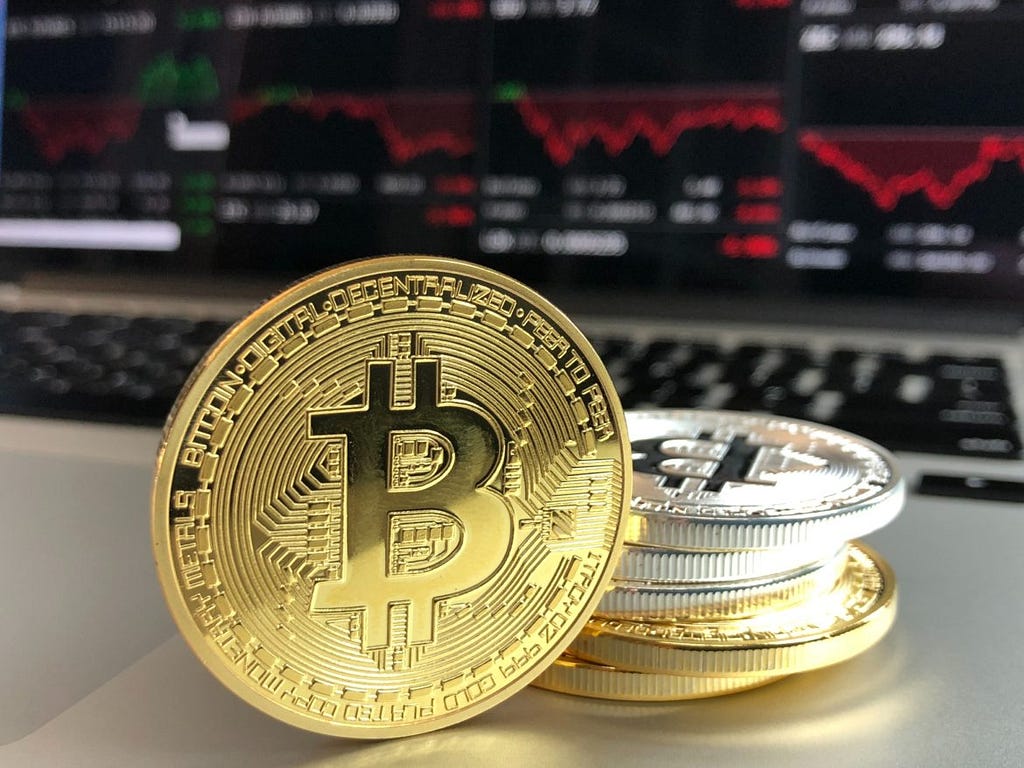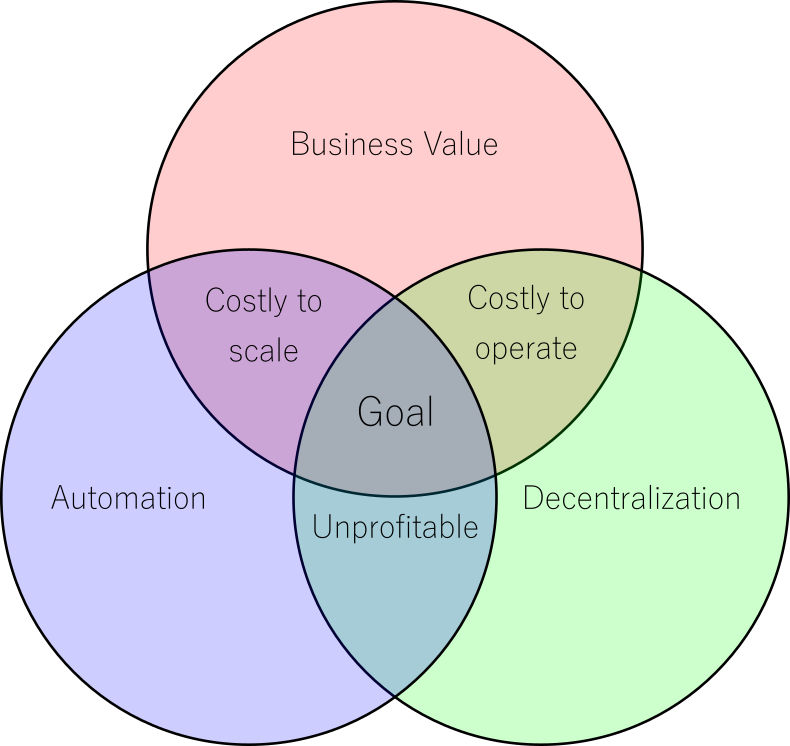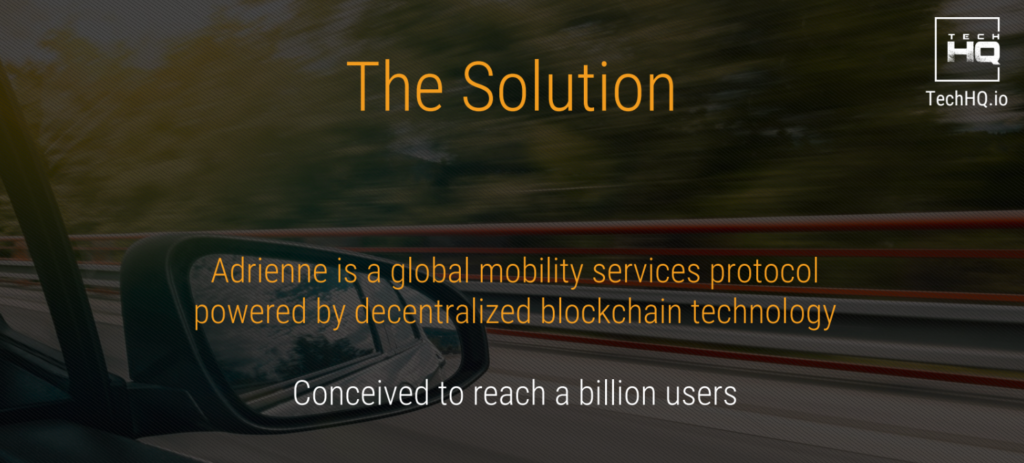Latest news about Bitcoin and all cryptocurrencies. Your daily crypto news habit.
Designing a Token Economy — How to Choose an Economic Goal
As a Blockchain Architect for TechHQ, designing cryptocurrency tokens is my bread and butter. In this article series I introduce the framework that I use to design effective and sustainable cryptocurrencies. Bitcoin took a life of its own once released into the wild, your token will do the same.
Bitcoin took a life of its own once released into the wild, your token will do the same.
As a Blockchain Architect for TechHQ, designing cryptocurrency tokens is my bread and butter. Over the last few months and two dozen conceptual designs for blockchain based solutions I struggled to feel that I was being thorough enough when proposing a design for a token economy, but more recently I’ve managed to develop a framework that finally makes me feel like I’m in control when tackling this complex task.
In this series of articles I’ll introduce you to some tools that will allow you not only to identify poorly conceived tokens, but also to design, deploy and manage a healthy token economy. This first article introduces the framework and discusses the first step of defining the goal of your token economy.
Let’s get started.
Introduction
The first question that you should ask yourself when looking at a token is “Why would anyone want to use this token?”.
Through history there is a clear search for more and more convenient forms of money. The basic bartering of my hunting for your gathering eventually was replaced by a number of prehistoric tokens such as cowry shells, salt or cereals that were easier to transport and store than the goods that were being exchanged in trade.
Those basic tokens were eventually replaced by precious metals that were even more convenient, and those precious metals were replaced by coins, asset-backed currency and nowadays floating currency that exists only as ones and zeros in some databases.
Cryptocurrencies are a new form of money, but a specific token will only be successful if it manages to be convenient enough. In this article we will discuss what are the meanings of convenient and enough by breaking the original question of “Why would anyone want to use this token” into six more detailed ones:
- Economy Objectives — What is this token economy trying to achieve?
- Stakeholder Mapping — Who is going to be part of this token economy?
- Market Design — How do you get people to enter into this economy?
- Mechanism Design — How are the token users compelled to behave?
- Monetary Policies — How are the tokens managed by the supplier?
- Governance — Who takes the decisions in this economy?
One final word of warning before we get into specifics is that a Token Economy is not your usual software product. In a Token Economy no one will have complete control of the whole environment. A Token Economy is an Emergent Complex System where some rules are set and then the system is left to evolve through time. Only a few tools are usually available to minimally to steer its behaviour, which is otherwise mostly determined by the interactions between many unpredictable components, namely the human beings participating in our Token Economy. Any efforts in dealing with Token Economies will always be constrained by the minimal control that anyone can ever have upon them.
Economy Objectives
Our first task in any given Token Economy is to find out what it is trying to achieve. Given that we don’t have complete control over the economy we need to define this objective not only as a point to reach but as a condition to maintain over time in which our business goals are being fulfilled. It is not enough to reach a million transactions per day in my solution if that means that the economy will degrade into irrelevance shortly after.
If we consider that we are going to try to steer a mass of many independent participants into one coherent behaviour, two goals strike as necessary in order to reduce the complexity of managing the economy to a minimum: Automation and Decentralization.
With automation we mean that the economy needs to be able to run by itself with minimal supervision because once a few million users are part of the economy any non-automated tasks will be a huge drag in efficiency and cause the users to migrate somewhere better.
Decentralization is a goal for the same reason as automation, any centralized component is liable to become a bottleneck and with economies being most efficient at their biggest scale effective decentralization will revert in a higher value returned to the participants in the economy.
Automation and decentralization are goals of a Token Economy and as such they are aspirational. Centralized systems with a degree of human oversight are much easier to control and may be appropriate for a starting Token Economy, but to achieve the massive scale that returns maximum efficiency and value the Token Economy will need to become automated and decentralized.
Only at this point is when we should start talking about the business goal of the token economy, which you should be able to describe in a few short sentences. This overarching goal will guide you through the rest of the analysis of a Token Economy and in the context of the current blockchain revolution, this goal will be most likely about disintermediation. The business goal for your Token Economy should propose to reduce friction in a given market by removing one or more value-extracting intermediaries.
At the Mercedes-Benz Mobility Hackathon we made use of this framework to design Adrienne, whose goal was to force the transition of the car industry into a mobility services business model by implementing a protocol that would allow the efficient composition of mobility services into tailored products for each individual use request. Having a clear goal that provided business value while making use of the decentralization and automation properties of blockchain to reach massive scale was pivotal for the design of a coherent, complete and powerful solution.
Conclusion
Through history we have seen that the evolution of currencies is always about transitioning to more convenient currency forms, meaning that when designing a cryptocurrency token you should always aim for it to be convenient for enough users and enough use cases. In this framework we break down the goal of token convenience into six steps.
The first step when designing a cryptocurrency is to clearly define its goal, considering that the cryptocurrency will be associated to a living economy and that you will probably need to aim for automation and decentralization in addition to the business goals that return you a profit.
In the next part of this series, we look into Stakeholder Mapping and Market Design, two powerful design techniques to know who participates in your token economy and design a market for them to transact.
Thanks to Lisa Tan, Eden Dhaliwal, and Dr. Zeynep Gurguc. Most of the content in this article is somehow derived from their work.
Originally published in the TechHQ blog.
Designing a Token Economy — How to Choose an Economic Goal was originally published in Hacker Noon on Medium, where people are continuing the conversation by highlighting and responding to this story.
Disclaimer
The views and opinions expressed in this article are solely those of the authors and do not reflect the views of Bitcoin Insider. Every investment and trading move involves risk - this is especially true for cryptocurrencies given their volatility. We strongly advise our readers to conduct their own research when making a decision.

